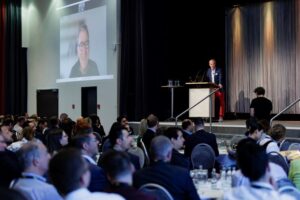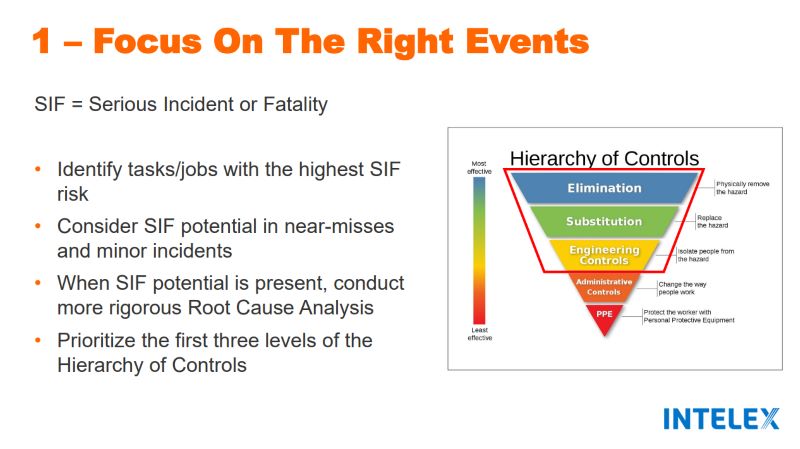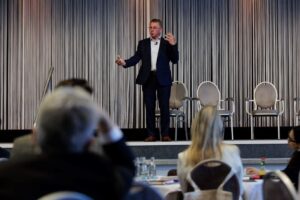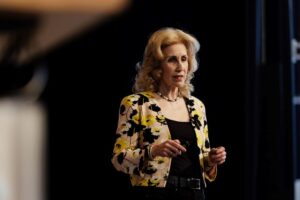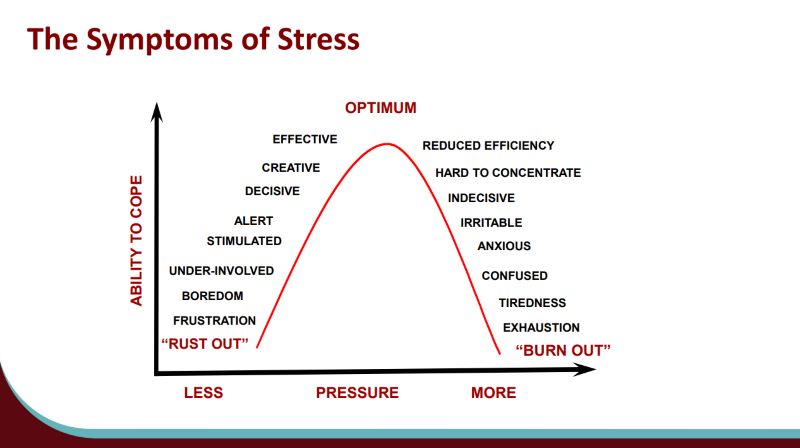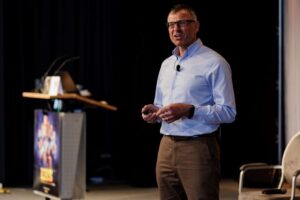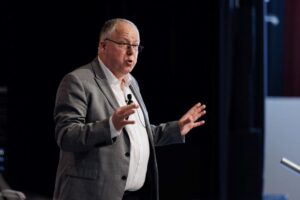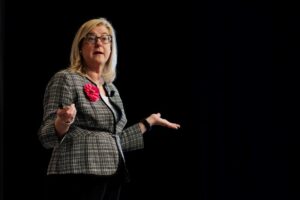The sixth annual EHS Congress in Berlin last month focused on safety culture, mental health and wellbeing. Led by Professor Dr Andrew Sharman over two-days, here Assistant Editor Rhianna Sexton, provides an overview of the some of the topics presented.
Organisational culture being the ‘key’ to change

Andrew Hopkins presenting virtually at the congress
Speaking on organisational structure, Andrew Hopkins, a retired academic and author, suggested the right structure of a company can create a safety culture naturally.
He argued that education campaigns have high hopes of changing the mindset of employees towards safety, but ultimately only have surface-level effects saying, “people learnt the language…but nothing else changed in terms of behaviour”.
On structure, he referenced the deep horizon oil spill in 2010, explaining that the performance agreement for its engineers had focused on cost and time saving as a priority, at safety’s expense. He added: “The fact is engineers had been co-opted by this organisational structure in which they operated, and their judgements were corrupted in that kind of way.
“It was an accident that nearly destroyed BP and they recognised that they had to do something about this situation, and they required an organisational change if they were going to rectify these weaknesses.”
Hopkins went on to highlight how the structure went from being commercially led, to instead having engineers reporting to senior engineers, with the most senior reporting directly to the CEO. He stated that this alteration changed the outlook of an engineer “his career was no longer dependent on satisfying the commercial interests of the company…it empowered these engineers to take independent decisions, and to be motivated by engineering best practice”.
He added: “I don’t think it was entirely coincidental that BP had no major accidents in the following 10 years, after which they started to abandon this model, because the organisation became complacent with many years of success, and I don’t think it’s coincidental that they had a major accident two years later, an explosion in a refinery in the US in which two people were killed.”
Workplace fatalities
Later, delegates heard from Trevor Bronson, Director of Portfolio Strategy at Intelex on workplace deaths and what organisations can do to reduce the number.
Bronson explained that practitioners are ultimately doing well to reduce accidents, however not the risk of fatality if an accident does occur.

Part of Bronson’s presentation at EHS Congress to focus on near-misses
He told delegates, “What we do need to focus on are those things that actually lead to fatalities, not every slip, trip and fall will cause someone to die.
“But there are certain types of incidents that do tend to lead to fatal outcomes more often than others, so identify tasks or jobs with the highest serious incident or fatality risk.”
On near misses at work, Bronson urged the audience to ask themselves, “what’s the worst thing that could have happened in that circumstance?”
He suggested it was beneficial to conduct a more vigorous cause analysis usually reserved for serious injuries, to the high risk near-misses which are often overlooked at a deeper level, and encouraged leveraging technology to help with this data collection.
“We are killing people”
Similarly, Marc Massaar van Schaik, Head of Health, Safety and Security at multinational utility company, ENGIE, discussed workplace accidents and a no blame culture by providing insights into ENGIE’s current transition.
He mentioned the firm’s new workplace initiative, One Safety: “The reason for this new safety programme was because of the dark side we have in ENGIE – in ENGIE we are killing people.

Marc Massaar van Schaik discussing blame culture
“In 2016-2021 there were 16 fatalities. Last year, we had 10 fatalities from both our own employees and contractors of which three were in [the space of] two weeks. And that was the red flag for our CEO.”
On beginning the initiative, he said training had to start with senior leadership: “The main effort this year is that we will train and coach from the top level to the plant level managers in what we call our energy managerial rituals.”
He also discussed when to act on mistakes and how an organisation should react: “If you look to a fair culture, it’s the right for everybody to make mistakes, and you can only be sanctioned after a fact-based analysis where it was intentional or if it was a repeat.
“It’s quite important because you also ask people to report mistakes – you want people to say, ‘I’ve messed up a little bit, but I’m telling you so that we can discuss how you can help me next time’
“The main principles are to accept that people make mistakes, invite them to talk about it and foster a no blame culture – it sounds very easy but it’s not that easy. Report events to learn from it, and only intentional or repeat violations should have some kind of sanction.”
Is stress good for you?

Carole Spiers presenting on stress at the conference
On the second day, delegates listened to Carole Spiers, CEO of CSG Stress Consultancy and Founder of Stress Awareness Week, on the difference between stress and pressure.
“Is stress different today than pre-covid? It is different,” she said.
Spiers called on delegates to analyse deeper when someone responds, “I’m fine” if asked if they are okay at work, but also questioned the response of being ‘busy’: “I’m busy – ‘oh that’s great!’. We all seem to wear ‘busy’ as a badge of honour.
“And so we end up with what we call ‘Busy Executive Syndrome’.
“What does it mean? It means you stop taking time out for yourself, you’re caught on this rollercoaster, going round and round. You don’t know how to stop it; you don’t know how to say no to people …you’ve become an adrenaline junkie. Is that possible? Yes.
“Then you find you’re on your way to burn out”.
She added that people naturally think they can “beat the system” and that burnout won’t happen to them:
“Then shock, horror, your body breaks down…you can’t beat the system, your body can and does breakdown.
“It’s the one thing that can’t be delegated,” She added.

Spiers mentioned we work well at our optimum but usually workload increases due to this, leading to burnout.
“Is stress good for you?” She asked the audience, some replied yes. “I have news for you,” she countered. “Stress is not good for you. What’s good for you then? Pressure. Pressure’s good for you, stress is not. Pressure is the motivator, stress is not.
“Stress is excessive pressure.”
Spiers explained how stress puts the body in a state of fight or flight and that we need to know how to turn it off.
“If you’re working really hard at work, maybe some late nights, maybe you are tired, it doesn’t mean you’re on the way to burn out, but you need to remember that after you have finished working really hard, you need to take a break.”
“We need to make that time for ourselves. Nobody else can do that apart from you.”
She called on delegates to discuss stress and pressure at work: “Talk about it. Keep mental health and stress high on the national agenda, on your agenda.”
Wellbeing as a framework

Wellbeing can be seen as a “fad” by senior leadership, Gary Booton told delegates
Later, Gary Booton, Global Head of Health and Safety and Environment at Hitachi Rail, discussed a wellbeing framework on a global scale and the challenges it brings.
He explained how senior leadership can look at wellbeing as a “fad” and that “developing a wellbeing strategy wasn’t a walk in the park”.
“I’m not sure what the wellbeing equivalent of green-washing is, but I know there’s a lot of tins of it in the corporate world at the moment, and what I’m not about is making the company look good on LinkedIn or to shareholders, what I’m really interested in is how people feel when they come to work – do they feel valued, do they feel that they can express themselves.”
He said as a global company Hitachi is at different stages when it comes to wellbeing: “This is a global business and people are at very different starting points.
“What we have to have is a framework here, we can’t dictate nor should we from the centre. It’s got to be global in terms of identity, but in terms of doing and people getting involved, it’s about creating a movement.”
Booton mentioned Hitachi’s own wellbeing initiative: “That’s what we’re doing with Be Well – we’re creating a movement that people can take part in to generate their own improvements, they should be in control, they should be leading what they need to do, but doing so with support, doing so with a framework.”
ESG and sustainability – the focus for HS professionals

Malcolm Staves, Global Vice President of Health and Safety at L’Oréal
Towards the end of the congress, Kathy Seabrook, CEO of Global Solutions, and Malcolm Staves, Global Vice President of Health and Safety at L’Oréal, presented on the difference between ESG and sustainability, and the role of the EHS leader.
Staves explained: “ESG is basically a framework of evaluating organisations of companies that we all work for, it’s all about the environment, social and governance – which is not just equal to audits, it’s about how the investor or bank looks at you and decides if they want to invest their money in you.
“When we look at sustainability it’s the wider impact of the environment, economy and society – so you could say ESG is almost a subset of sustainability.”
Seabrook discussed why the ESG focus was now internal in organisations: “We need to be looking at the stakeholders at your current company.
“It’s important to understand that even if you think this isn’t for you, your organisation may be tapping you on the shoulder tomorrow morning.
“From an ESG perspective it really is an investor focus – and the investors are basically saying we need clear, concise, measurable, transparent and assured data. Data and data management is your friend because you really need to rely on technology for that.

Kathy Seabrook, CEO of Global Solutions
“It’s not about us having a seat at the table – we are the table, and we just need to recognise that.”
Staves added: “ESG will be here for the foreseeable future until mainstreamed and integrated into all investment decision making”.
He highlighted how occupational health and safety’s importance will accelerate just as ESG has: “Remember for those that were working before 2000, environment wasn’t such a big thing? It’s railroaded now – what makes you think that health and safety, wellbeing, and mental health isn’t going to do the same in the next five, 10 or 15 years…it will be a license to operate.
“Good ESG, good ratings will mean your organisations will get credit and investment.”
Staves concluded that delegates should act now: “You don’t need to knock on the door of your CEO, they’re going to come looking for you…the time is now, you can be part of the journey and make the changes that you want to see – collectively we’re stronger together and I think that’s the best way forward.”
The two days also had panel events and breakout sessions, where topics such as contractor management, non-technical skills, AI’s role in workplace accidents and inclusion were discussed. EHS Congress will be back in Berlin on 22-23 May 2024.
Why should you subscribe to the SHP newsletter?
Do you want the very latest health and safety news, product launches, job listings and expert opinions sent straight to your inbox daily?
The SHP newsletter is essential reading – sign up today to get your hands on all this!

